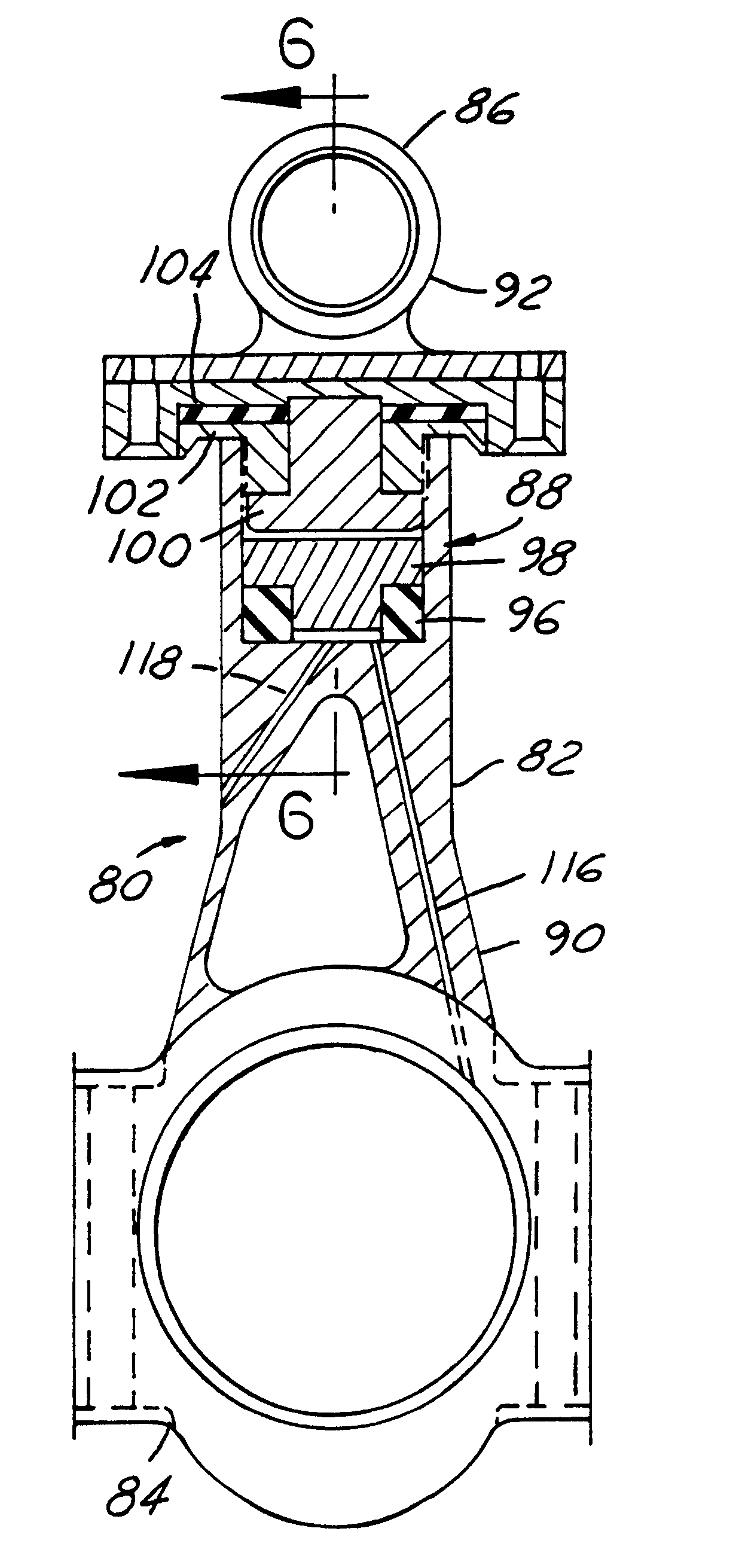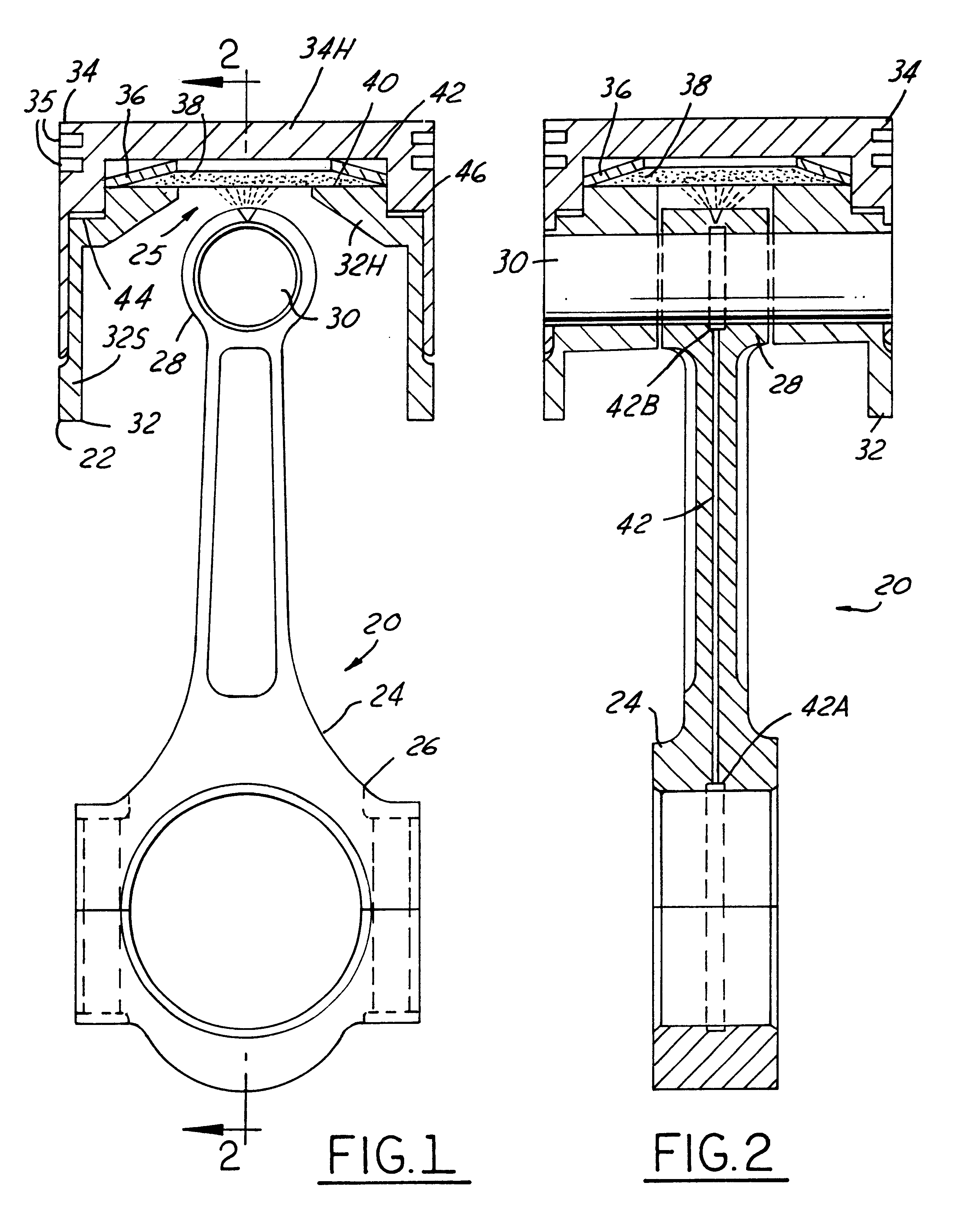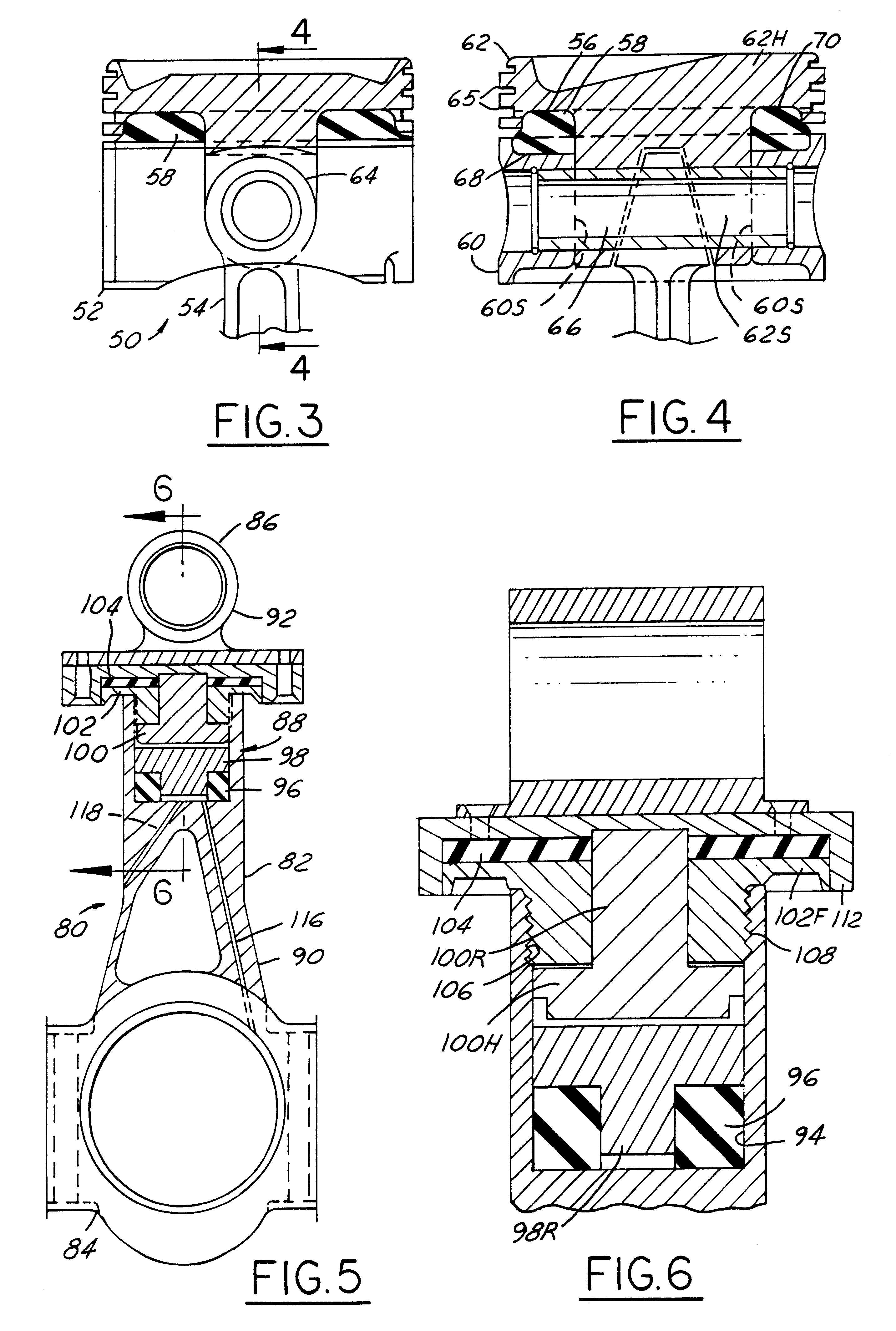Variable compression ratio pistons and connecting rods
a compression ratio and piston technology, applied in the direction of engines, mechanical equipment, machines/engines, etc., can solve the problems of engine knocking in a motor vehicle typically prevailing, gasoline engine whose compression ratio remains invariant as operating conditions change, and engine is incapable of achieving more efficient operation
- Summary
- Abstract
- Description
- Claims
- Application Information
AI Technical Summary
Problems solved by technology
Method used
Image
Examples
embodiment 20
FIGS. 1 and 2 disclose a first piston / connecting rod embodiment 20, comprising a piston 22 and a connecting rod 24, for endowing an engine with a variable compression ratio by embodying a variable length mechanism 25 in piston 22.
Connecting rod 24 comprises a large end 26 for journaling on a crank pin of a crankshaft (not shown) and a small end 28 for journaling on a central portion of a wrist pin 30 that couples the connecting rod to piston 22. Connecting rod 24 has a fixed length between the centers of its large and small ends, and it connects piston 22 with the crank pin to relate reciprocal motion of piston 22 to rotary motion of the crankshaft.
Piston 22 comprises a first part 32 and a second part 34. Each part may be considered to have a respective head 32H, 34H, and a respective skirt 32S, 34S. Wrist pin 30 connects the connecting rod small end 28 only to part 32 so that the travel of part 32 within the engine cylinder is exactly equal to the stroke of connecting rod 24. Part ...
embodiment 80
FIGS. 5 and 6 show the connecting rod 82 of a third piston / connecting rod embodiment 80 for endowing an engine with a variable compression ratio. Connecting rod 82 comprises a large end 84 for journaling on a crank pin of a crankshaft (not shown) and a small end 86 for journaling on a central portion of a wrist pin (also not shown) for coupling the connecting rod to the piston (also not shown). A variable length mechanism 88 is embodied in the connecting rod between its large and small ends to provide for variation in overall length between the large and small ends.
Connecting rod 82 comprises a first part 90 containing large end 84 and a second part 92 containing small end 86. The end of part 90 opposite large end 84 comprises a blind hole 94. Mechanism 88 comprises a first elastomeric mass 96, a control plug 98, a control ram 100, a lower retainer 102, and a second elastomeric mass 104.
Elastomeric mass 96 comprises a flat ring of relatively higher modulus of elasticity disposed at ...
embodiment 120
FIGS. 7 and 8 show the connecting rod 122 of a fourth piston / connecting rod embodiment 120 for endowing an engine with a variable compression ratio. Connecting rod 122 comprises a large end 124 for journaling on a crank pin of a crankshaft (not shown) and a small end 126 for journaling on a central portion of a wrist pin (also not shown) for coupling the connecting rod to the piston (also not shown). A variable length mechanism 128 is embodied in the connecting rod between its large and small ends to provide for variation in overall length between the large and small ends.
Connecting rod 122 comprises a first part 130 containing large end 124 and a second part 132 containing small end 126. The end of part 130 opposite large end 124 comprises a blind hole 134. Mechanism 128 comprises an elastomeric mass 136 and a piston 138. An end of part 132 opposite small end 126 is fastened tight to piston 138. Piston 138 fits closely within hole 134. Elastomeric mass 136 is disposed within hole 1...
PUM
 Login to View More
Login to View More Abstract
Description
Claims
Application Information
 Login to View More
Login to View More - R&D
- Intellectual Property
- Life Sciences
- Materials
- Tech Scout
- Unparalleled Data Quality
- Higher Quality Content
- 60% Fewer Hallucinations
Browse by: Latest US Patents, China's latest patents, Technical Efficacy Thesaurus, Application Domain, Technology Topic, Popular Technical Reports.
© 2025 PatSnap. All rights reserved.Legal|Privacy policy|Modern Slavery Act Transparency Statement|Sitemap|About US| Contact US: help@patsnap.com



